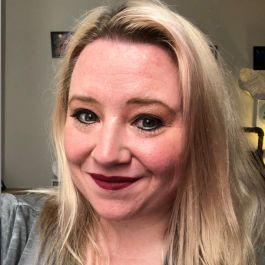As project managers at Engagency, Heather Mathieu, Jimena Lopez-Silsby and Nikki Thomas know firsthand how complex — and exciting — enterprise web development projects can be.
Whether they’re working with multiple sets of user personas or handling complex security protocols, all three PMs continually strive toward the same goal: Deduce what a client needs while keeping every project on time and on budget.
For Thomas, this vision applies to all technical project management, regardless of the client. “A PM’s goal is to be creative in their problem-solving and remain positive and helpful no matter where they’re meeting a client,” she said.
According to Mathieu, Lopez-Silsby and Thomas, there are many factors PMs need to consider throughout the duration of any project, from deciding on the best tools to meet a client’s specific needs to finding the right methodology to get a project across the finish line. Below, the three PMs describe the skills and technologies needed for technical project management at Engagency, as well as their company’s supportive and collaborative PM culture.

What’s different about handling projects for enterprises as opposed to ones for smaller companies?
Mathieu: There are many more moving parts when building an enterprise-level website. There’s a much deeper level of data integration, data feeds, front-end integrations and personalization to take into account. Enterprise companies usually have multiple sets of user personas, and we have to develop for each of them. Smaller organizations may not have defined personas, which means you may be designing for a single journey.
Architecturally, they’re very different beasts. Enterprise web development also involves more complex security protocols. You may have to account for client security policies, change control boards and regulation governance, all of which a smaller organization may not have. Not only do you have more integrations to account for on the development side of things, but you’re also navigating a larger process with different stakeholders. Yet these types of projects can also be the most interesting. They serve a wider audience with more personas and solve bigger business problems for our clients.
What project management tools does your team use mostly frequently?
Lopez-Silsby: A PM is only as good as their understanding of how their project is doing. While this can be done through meetings and note-taking, tools make things more visible and help facilitate communication by keeping everything in one place. Before the rise of newer technology, PMs relied on Microsoft Project. While this type of legacy system can work well within an organization, it’s less effective when collaborating with outside vendors and agencies, as many enterprises do when undergoing a digital transformation. In the past, PMs would make a Microsoft Project schedule, create a PDF of it and send it to everyone. Every time there was a change, they would restart the process.
Thomas: Thankfully, collaborative tools are becoming more widely used. There are various tools such as Smartsheet, which enable users to control access levels and allow only certain people to make edits. This allows everyone to collaborate rather than give the PM sole control over the document. Google Sheets is also a great tool for driving collaboration.
Mathieu: I love Google Suite. We also use Jira as our project management tool, leveraging Confluence for documentation. Since it works like a basic Word Editor or Wiki, it doesn’t require a huge learning curve. This allows us to easily share and collaborate with our clients while streamlining project management. Since Confluence is a part of Jira, it keeps all the documentation tied to the project instead of forcing us to search for specific documents or folders.
What are the most commonly used methodologies in project management, and what are the pros and cons of each?
Lopez-Silsby: Organizations follow different methodologies, but there are three main ones PMs encounter: waterfall, agile, and hybrid. Waterfall was the original methodology for project management, which compelled PMs to schedule big blocks of time to perform different tasks, which meant one block needed to be completed before the next one could be started. The obvious downside to this approach is that the time to delivery is really long, especially with larger projects. You have to do all of the work in one phase before you can share it with your client and gather their valuable feedback.
Agile rose in popularity over the past 10 years. Its main goal was to increase the time to delivery, so you can deliver work to your clients more quickly. What they see is not necessarily a final product, since you’re working in shorter sprints of two to six weeks. Yet at the end of each sprint, they can offer feedback, and if needed, you can pivot accordingly.
Mathieu: The ability to pivot is a huge advantage of using the agile methodology. If a client changes their mind, you can adjust quickly before going too far down the wrong path, which keeps you from undoing a lot of work later on. However, some stakeholders struggle with not knowing exactly when their product is going to be finished. Because you’re working in smaller sprints and each new request or feedback can impact the delivery of future sprints, it becomes even more important to communicate with stakeholders and maintain transparency.
Some organizations adopt a hybrid process that lies somewhere in between agile and waterfall. With a hybrid process, nothing is standardized, so it’s up to PMs to find the specific approach for your agency.
SPACE TO SCALE
What are some skills you find especially useful as a PM?
Mathieu: There is no such thing as over-communication. Put your thoughts in an email, a meeting agenda, to-do lists and follow-up emails. Always let people know about a change the second you know it’s coming so that they’re fully prepared to handle it. Keeping people in the dark causes resentment and chaos. You want to avoid surprises in project management, as they break the unspoken rule of collaboration and create a sense of instability and lack of control over the product and the process they’re paying you to deliver.
Thomas: Always remember the most important thing to the client about a project. For instance, is there a date that matters, and is the budget absolutely set in stone? Knowing the client’s goal and continually communicating in terms of that goal goes a long way in managing expectations. Imagine that there’s a firm deadline for a project. If that client comes back with new requests, you can explain how it will affect that end date and offer suggestions for how you can adjust the project to meet their deadline.
Lopez-Silsby: PMs tend to be good communicators. If you go into project management, you like working with people. While you’re managing work and timelines, you’re also working with a lot of individuals, such as developers, quality assurance analysts and customers, while forming relationships with them. If you’re doing your job right, you’re making an internal team member’s job easier by guiding them through projects. For the client, you’re making their business dreams a reality. Either way, you get to be a lifesaver.
There are plenty of classes for formal PM training. It’s good to learn about scope, estimation and timelines, as well as the actual life cycle and different methodologies. You’ll also want to get your Project Management Professional certification. If you’ve been a part of projects before, however, you’ll already understand some elements of project management.

Do you have any advice for those just getting started in project management?
Lopez-Silsby: No matter where you work, whether it’s a huge corporation or a small agency, it’s important to seek out a PM peer group. It’s so helpful to bounce ideas off of and work with other PMs, even within a small team. I would recommend anyone who is just starting out in the field to find a group with three or four PMs, because you’re going to learn so much from them.
Mathieu: Know your spreadsheet shortcuts!
How would you describe the PM team culture at Engagency?
Mathieu: Engagency has always had a people-first culture. Prior to the pandemic, we fostered this in the office. We ate lunch together every day and had regular happy hours. Since then, we’ve transitioned to being fully remote and went through a bit of a growth period, yet we’ve managed to stay just as close and supportive as we were in the office. We still have a bi-weekly happy hour over Zoom and celebrate birthdays and team wins along with other group bonding activities. The PM team has its own separate happy hour to help us build connections.
Lopez-Silsby: We have a collaborative, close-knit culture. Engagency almost operates like a smaller agency in that sense. We have closer bonds so we can figure things out together. Sometimes, agencies can have very rigid corporate structures, in which you have to climb a ladder to prove yourself and make your voice heard. It’s not like that here. At Engagency, you’re respected from the beginning, so it feels easier and more organic to collaborate.
Thomas: It’s more top-down at other agencies. Engagency is more open to change, and all of us are recruited to participate in that change. That openness creates more buy-in and gives everyone greater confidence. We also hire people based on the fact that they do more than simply follow a process. They’re the type of people who like to do research and solve problems.






